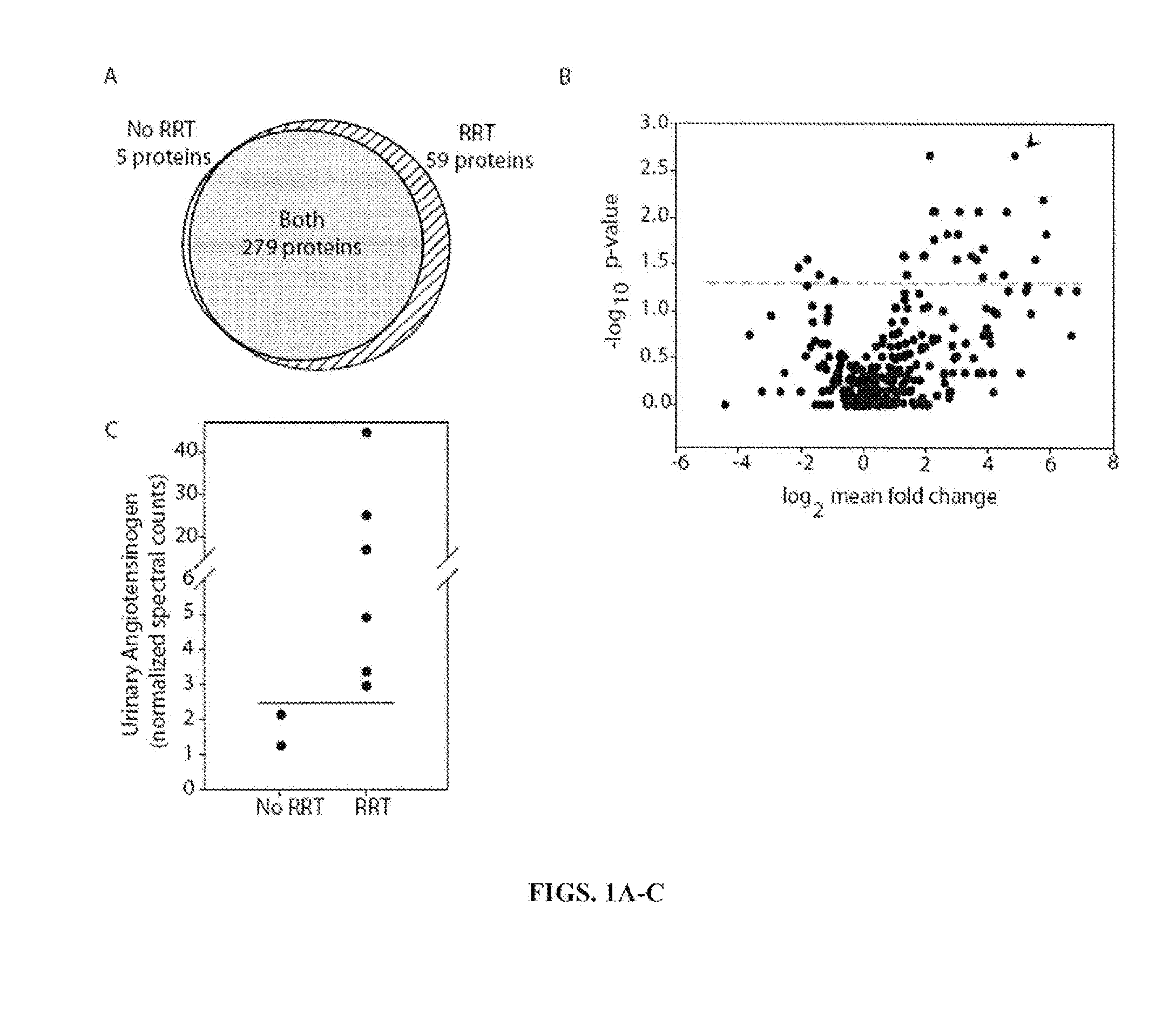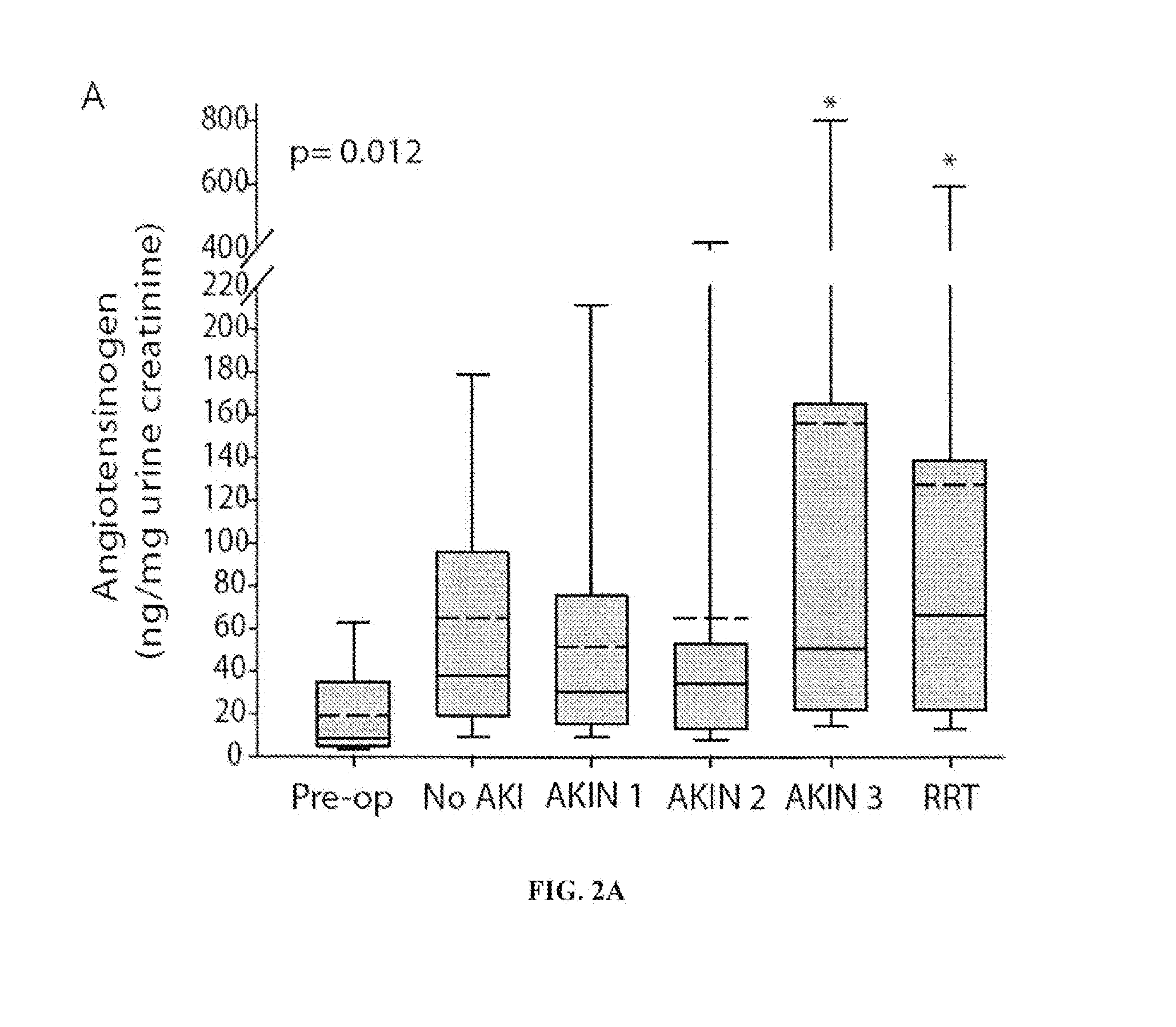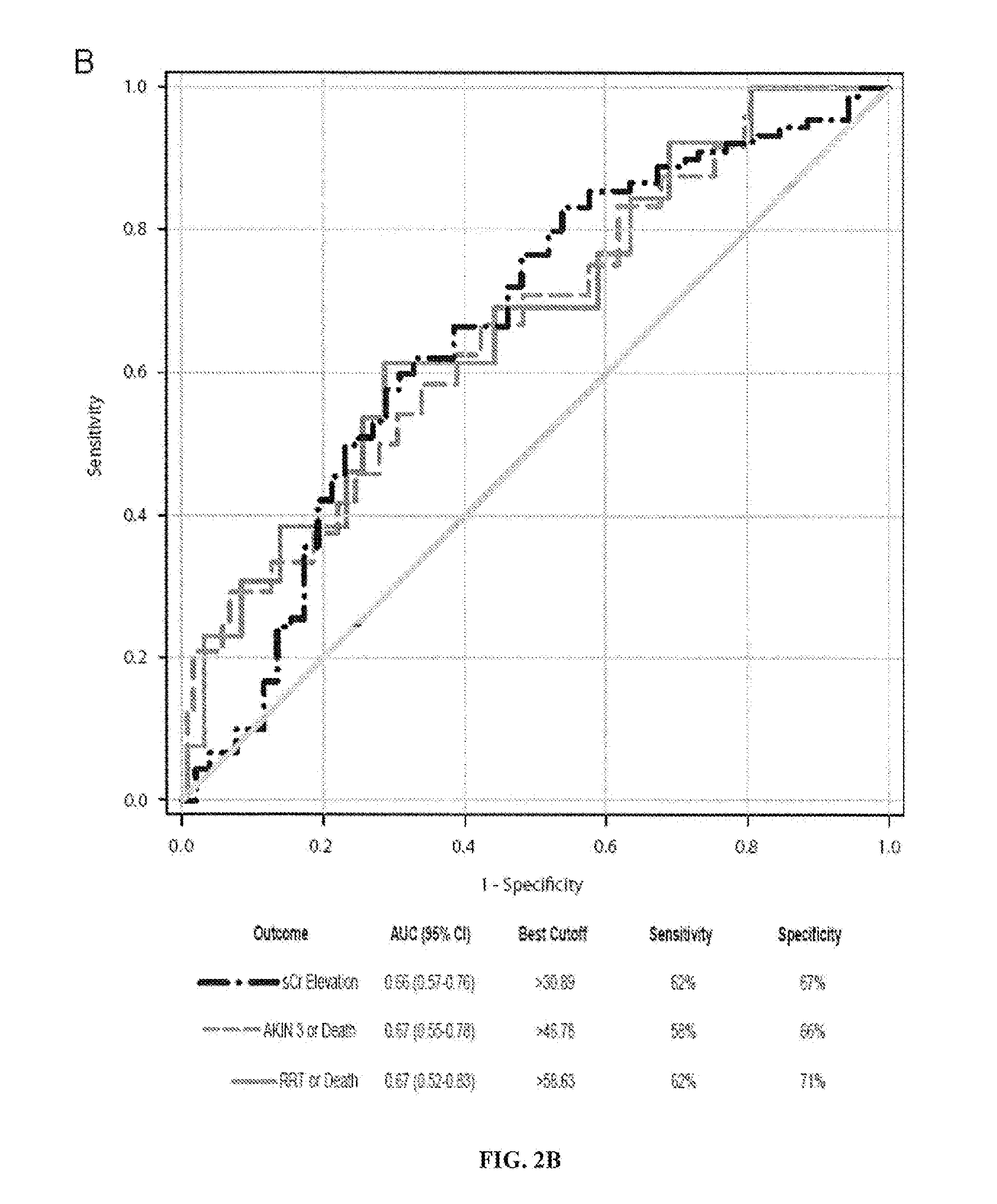Methods for detecting or predicting kidney disease
- Summary
- Abstract
- Description
- Claims
- Application Information
AI Technical Summary
Benefits of technology
Problems solved by technology
Method used
Image
Examples
example 1
Urinary Proteins Associated with Acute Kidney Injury (AKI)
[0134]Proteomic Analysis. Two studies were done in urine from patients who had cardiac surgery and one study was done in a rat model of AKI. The first human study (RRT study) was designed to identify candidates that predict severe renal failure requiring renal replacement therapy (RRT). In the RRT study the inventors used proteomic analysis to identify angiotensinogen as a biomarker to predict severe AKI. The inventors confirmed the ability of urinary angiotensinogen and the angiotensinogen to creatinine ratio to predict severe AKI. The second human study (EARLY study) was designed to identify candidate urine biomarkers that occur early in acute kidney injury. The third study (RAT study) was designed to identify markers that occur in a rat model of AKI. The inventors used the data from all three proteomic studies to determine the AKI biomarkers that were useful for predicting both early AKI and severe AKI. The use of human an...
example 2
[0168]The inventors will use a similar approach to generate the multiplexed MRM assay to use for rat AKI markers. As an example, the inventors show the development of a panel of AKI biomarker assays that have been tested by the Predictive Safety Testing Consortium (PSTC). The multiplexed assay consists of a panel of MRM assays to measure 6 nephrotoxicity markers in rats and determine the assay characteristics for each analyte to result in a 6-plex assay. The panel will include the following proteins: 6 urine proteins from the PSTC (Kim-1, Trefoil factor 3, albumin, β2-microglobulin, cystatin C and clusterin). The seventh PSTC marker is total urine protein concentration which is not an individual protein and will not be included in this assay. These proteins have been approved by the FDA and EMA for preclinical evaluation of nephrotoxicity.
TABLE 7Peptides for measurement of 6 PSTC nephrotoxicity biomarker proteinsProteinPeptideAliphaticProteinIDPeptideseenMWplindexGRAVYKim-1O549471VE...
example 3
Urinary Angiotensinogen Predicts Outcomes in AKI Patients in the ICU
[0175]Methods:
[0176]Urinary angiotensinogen was measured by ELISA in urine samples from ICU patients with AKI of diverse causes (n=40; Table 1). ROC curves were used to evaluate the ability of urine creatinine corrected angiotensinogen to predict the following outcomes: worsening of AKI, AKIN stage 3 AKI, need for renal replacement therapy (RRT), AKIN stage 3 AKI or death, and RRT or death.
[0177]Results:
[0178]Patients who met the primary outcome of RRT / death had a nearly twelve-fold increase in median uAnCR compared to those who did not (133.3 ng / mg versus 11.4 ng / mg). ROC curve analysis demonstrated that uAnCR was a strong predictor of this outcome (AUC=0.79). In addition to the primary outcome, the inventors found that uAnCR was a modest predictor of the composite outcome AKIN stage 3 AKI or death (AUC=0.71). Finally, the inventors found that patients with high concentrations of uAnCR had increased length of stay ...
PUM
| Property | Measurement | Unit |
|---|---|---|
| Concentration | aaaaa | aaaaa |
Abstract
Description
Claims
Application Information
 Login to View More
Login to View More - R&D
- Intellectual Property
- Life Sciences
- Materials
- Tech Scout
- Unparalleled Data Quality
- Higher Quality Content
- 60% Fewer Hallucinations
Browse by: Latest US Patents, China's latest patents, Technical Efficacy Thesaurus, Application Domain, Technology Topic, Popular Technical Reports.
© 2025 PatSnap. All rights reserved.Legal|Privacy policy|Modern Slavery Act Transparency Statement|Sitemap|About US| Contact US: help@patsnap.com



